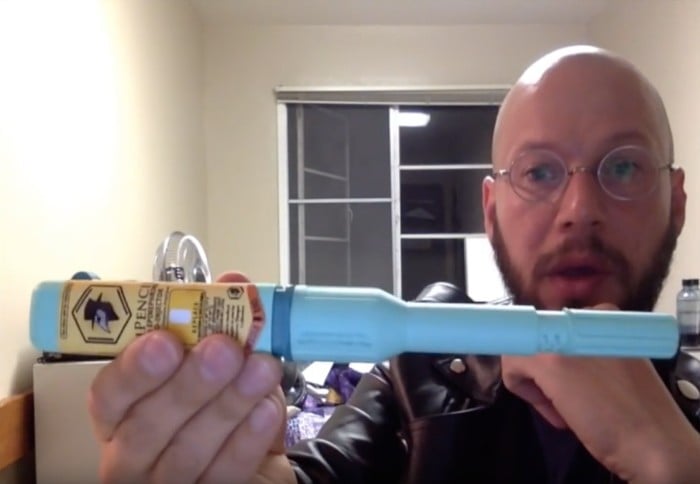It Costs $30 to Make a DIY EpiPen, and Here’s the Proof
The recent furor over the drug company Mylan jacking up the price of lifesaving EpiPens has brought out the biohackers. A team of DIY enthusiasts calling themselves Four Thieves Vinegar have published plans that will allow anyone to build a device to self-inject epinephrine on the cheap.
EpiPens are meant as a last-ditch measure to ward off anaphylaxis—a potentially fatal allergic reaction that can result from exposure to anything from peanuts to insect stings. The drug itself is over 100 years old, but the device makes it easy for anyone to inject, which is an attractive proposition when flirting with death.
The pharmaceutical company Mylan, which is the only manufacturer of the device, was recently shown to have raised the prices of a single device from $57 to $318—that’s a 461 percent increase—since acquiring rights to it in 2007. The backstory is a bizarre tale that involves corporate greed, Congress, and Sarah Jessica Parker. Sadly, the cost prevents some people from having access to an incredibly reliable way to treat anaphylaxis.

There are several reasons why nobody else has built an alternative to the EpiPen, among them patent protection, fear of creating a device that doesn’t work reliably, and a regulatory process that makes getting products to market incredibly difficult.
Mylan did bow (a little) to public pressure, announcing a new generic EpiPen that costs $150 for a single device. But industry insiders have suggested that the components of an EpiPen cost only around $30.
And Four Thieves Vinegar, a collective that was founded to create tools for DIY medicine, has now shown that to be accurate.
The group has published a video and instructions online in which it demonstrates how to build a home-brew version of the device. They call it the EpiPencil. The team claims that it can “be built entirely using off-the-shelf parts, for just over $30.” It pairs an existing auto-injector for diabetes sufferers with regular hypodermic needles. There is, of course, the small matter of sourcing the drug that puts the “epi” in the EpiPencil—but that can be obtained under prescription or online from a chemical supplier.
It’s worth noting that while it may be possible to make such a device at home, it’s completely unregulated. Using one to treat a person for anaphylaxis would not necessarily be a good idea. But as proof that Mylan’s pricing is inflated, there’s no denying its validity.
(Read more: Stat, The Guardian, NBC)
Deep Dive
Biotechnology and health
How scientists traced a mysterious covid case back to six toilets
When wastewater surveillance turns into a hunt for a single infected individual, the ethics get tricky.
An AI-driven “factory of drugs” claims to have hit a big milestone
Insilico is part of a wave of companies betting on AI as the "next amazing revolution" in biology
The quest to legitimize longevity medicine
Longevity clinics offer a mix of services that largely cater to the wealthy. Now there’s a push to establish their work as a credible medical field.
There is a new most expensive drug in the world. Price tag: $4.25 million
But will the latest gene therapy suffer the curse of the costliest drug?
Stay connected
Get the latest updates from
MIT Technology Review
Discover special offers, top stories, upcoming events, and more.